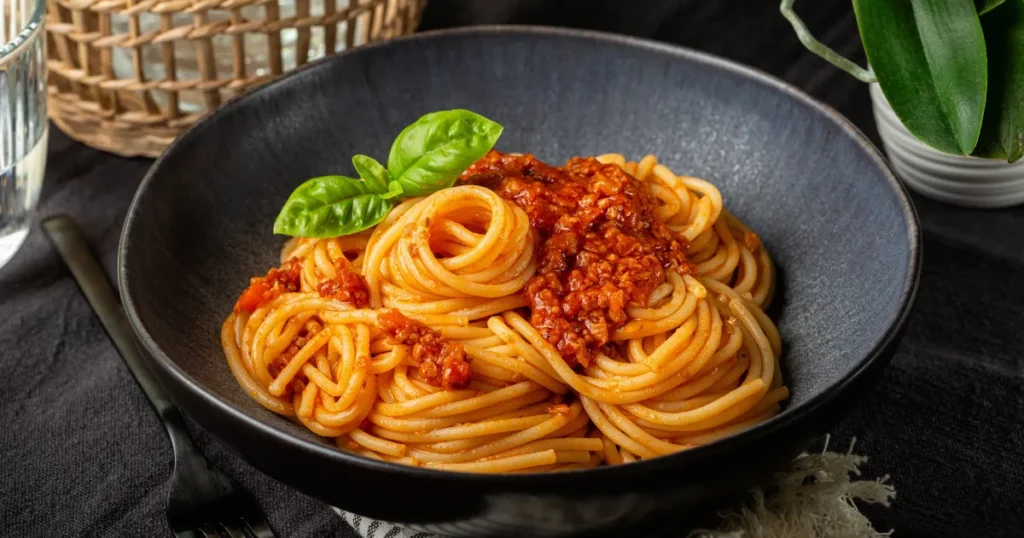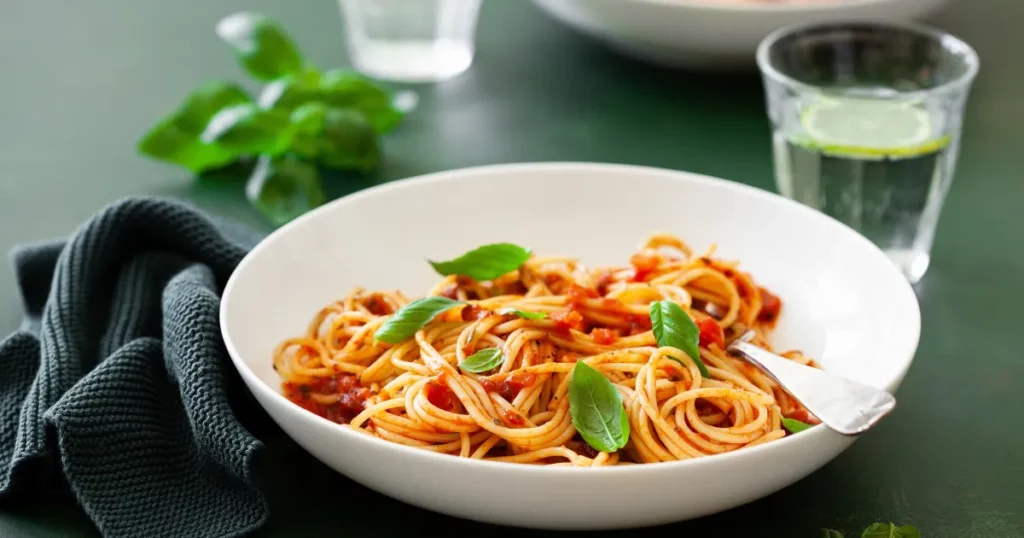Spaghetti is one of the most iconic discoveries of Italy. The dish today is available in most corners of the world as its dearly loved by people of all strata, among all age groups and genders. From the classic version Bolognese to the humble Aglio e Olio, this pasta has cemented in culinary history as a true icon.
In this blog, we’ll dive into the origins of spaghetti, explore its evolution through the ages, and uncover how it became a global favorite. Whether you’re a pasta lover or a history buff, this journey is worth savoring.
Spaghetti Origin: The Early Beginnings of History Of Spaghetti

The story of this food item begins long before Italy became its culinary home. While pasta is synonymous with Italian cuisine today, its roots are believed to be traced back to ancient civilizations in Asia and the Middle East. Hence, the spaghetti country of origin includes Arab countries.
Arab Influence on Pasta
One of the earliest mentions of pasta comes from Arab traders who brought dried noodles to Sicily during the Arab conquest in the 7th century. The dried and long-stranded version of Pasta, today known as Spaghetti, was non-perishable, affordable, and light in weight to be carried. Moreover, its affordibility too added to its popularity.
China’s Role in Pasta History
There is also a theory that pasta, including spaghetti, may have been influenced by Chinese noodles. While Marco Polo’s famous travels in the 13th century are often cited as a key moment for introducing pasta to Italy, evidence suggests that pasta-making had already existed in Italy by this time, with Arab traders playing a far more significant role.
History Of Spaghetti Through the Ages: Its Rise in Medieval and Renaissance Italy
It truly began to flourish in Italy during the medieval and Renaissance periods.
Sicily: The Birthplace of Italian Pasta
Sicily became a center for pasta-making because of its strategic location and cultural exchanges with Arab traders. The introduction of durum wheat, a key ingredient in pasta, made it possible to produce dried pasta that could be stored for long periods.
Naples: Spaghetti’s Evolution into a Staple
By the 17th century, Naples emerged as the epicenter of pasta production. Due to affordability, Spaghetti gained popularity among the masses. To add nutritional value, simple ingredients like olive oil, garlic, and cheese were added.
The Renaissance and Pasta-Making Techniques
Innovations like the pasta press in the Renaissance period marked a significant advancement in pasta-making techniques. This brought along standardization in terms of shape, size, and uniformity in strands. This era also saw pasta paired with tomatoes, which had been introduced to Europe from the Americas. This combination of spaghetti and tomato sauce was revolutionary, paving the way for many beloved Italian dishes.
The Evolution of Spaghetti Dishes
As spaghetti became a staple in Italian households, chefs and home cooks began experimenting with flavors and combinations, creating a wide range of dishes showcasing this pasta’s versatility. The most notable dishes that popped up included Spaghetti alla Carbonara, Spaghetti alle Vongole, and Spaghetti Aglio e Olio.
In modern times, spaghetti has been reimagined countless times, from fusion dishes incorporating Asian flavors to vegan and gluten-free versions. Its adaptability makes it a favorite ingredient for chefs worldwide.
Spaghetti’s Global Journey: From Italy to the World

Spaghetti’s journey from a regional Italian staple to a global phenomenon is a testament to its universal appeal.
The Role of Italian Immigrants
In the late 19th and early 20th centuries, Italian immigrants brought their culinary traditions to countries like the United States, Argentina, and Australia. Spaghetti, often paired with tomato-based sauces, quickly became a popular dish in these regions.
Hollywood’s Influence
Movies and pop culture also played a role in popularizing spaghetti. Iconic scenes, such as the romantic spaghetti-eating moment in Disney’s Lady and the Tramp, helped cement its place in popular culture.
Adapting to Local Palates
As the item spread worldwide, it adapted to local tastes. For example, sweet spaghetti with banana ketchup became a beloved dish in the Philippines. In Japan, wafu spaghetti incorporates ingredients like soy sauce and seaweed. Despite these variations, spaghetti retains its Italian essence.
Craving a Plate of Spaghetti? Order Your Favorite Dish Now on Swiggy
If reading about spaghetti has your mouth watering, why not treat yourself to a delicious plate? Search Pasta restaurants near me and step out. Or, with online platforms like Swiggy, you can order a variety of dishes from top restaurants in your area. Whether you’re in the mood for classic Spaghetti Bolognese or something more adventurous, Swiggy has you covered.
Order now and experience the magic of Italy’s most iconic pasta dish delivered straight to your doorstep.
Conclusion
Spaghetti is more than just a type of pasta—it’s a culinary icon with a rich history that spans centuries and continents. From its humble beginnings in Sicily to its global journey, this has captured the hearts and taste buds of people worldwide.
Its versatility, simplicity, and deliciousness make it a timeless dish that continues to evolve and adapt. Whether you’re enjoying a traditional Italian recipe or a creative modern twist, spaghetti is a dish that brings people together.
So the next time you twirl those golden strands around your fork, remember the fascinating history and journey behind this beloved pasta.
FAQ
1. Who was the inventor of spaghetti?
While no single person is credited with inventing spaghetti, its origins are linked to Arab traders who introduced dried pasta to Sicily. The Italians refined and popularized it over the centuries.
2. Where did spaghetti originally come from?
The origin of spaghetti happened in Sicily, and it was influenced by Arab traders who brought dried pasta-making techniques to the region.
3. What’s the difference between spaghetti and other Italian pasta?
It is a long, thin, cylindrical pasta. Its simplicity and versatility set it apart, making it suitable for various sauces and preparations, unlike shaped pasta like penne or farfalle.
Author Bio
Satisfying your cravings, one bite at a time. Discover the best eats, trends, and uncover the hidden gems with us to make your online ordering or dining experience a memorable one.










































































